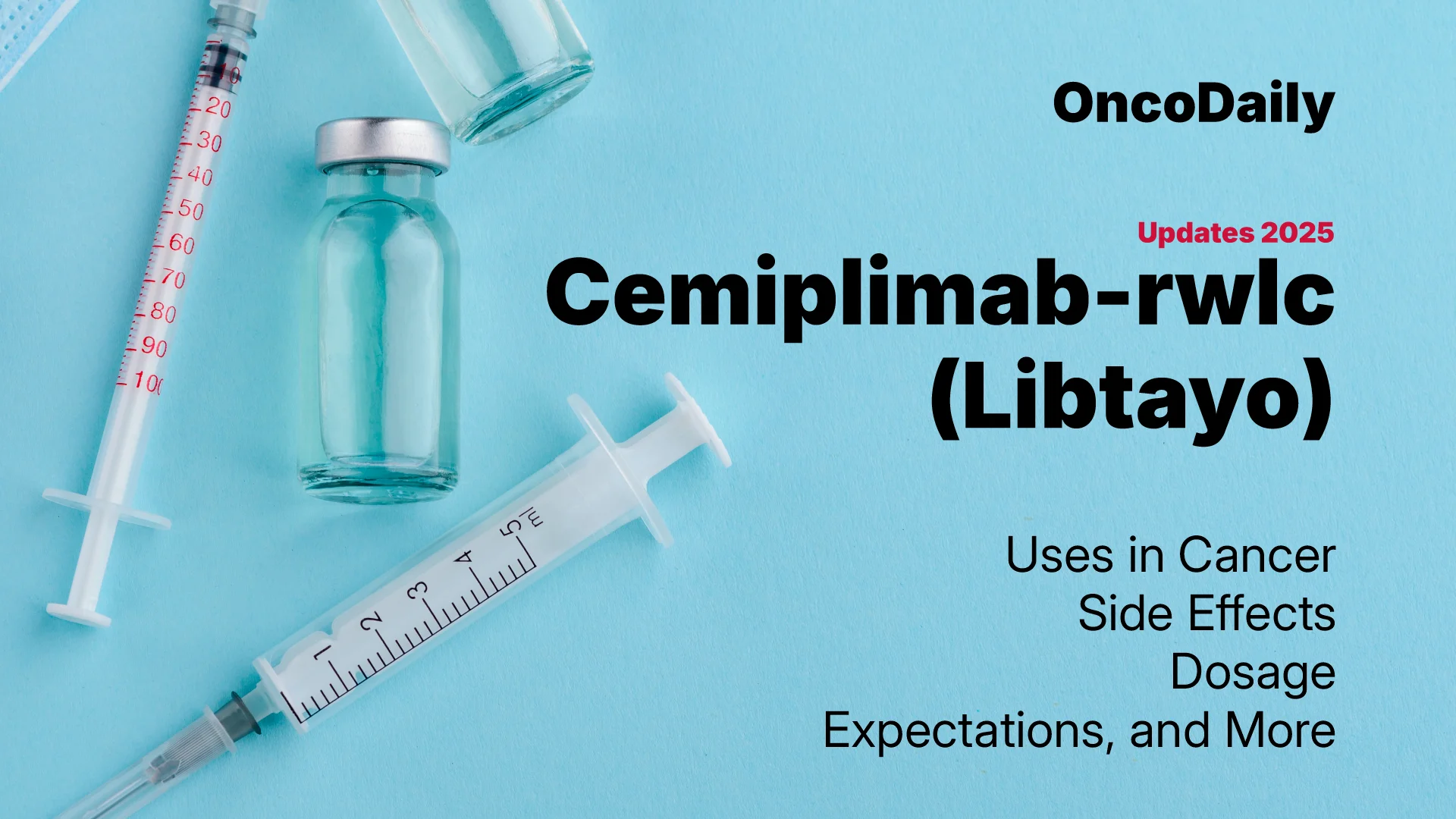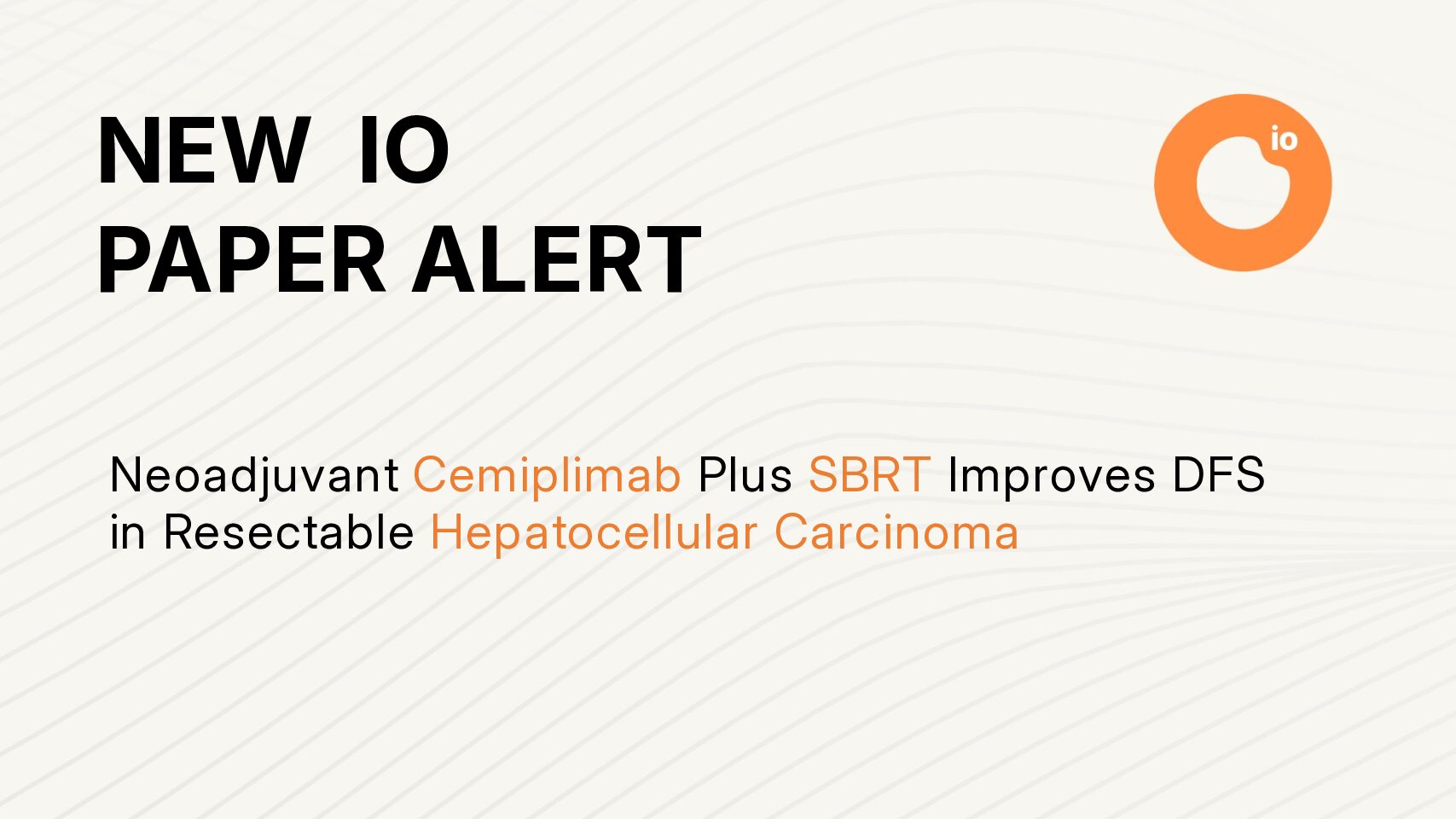A phase II study presented at SITC 2025 evaluated whether adding stereotactic body radiotherapy (SBRT) to neoadjuvant cemiplimab could improve outcomes in patients with resectable hepatocellular carcinoma (HCC). The results demonstrate a notable improvement in 2-year disease-free survival (DFS) with the combination regimen, while maintaining a manageable safety profile.

cemiplimab
You Can Read About Cemiplimab-rwlc (Libtayo) Updates 2025: Uses in cancer, Side effects, Dosage, Expectations and more
Background
Curative-intent resection in HCC is frequently followed by recurrence, highlighting the need for effective neoadjuvant strategies. Immune checkpoint blockade has shown potential in resectable disease, and preclinical data suggest synergy between radiotherapy and anti–PD-1 agents. This trial assessed whether cemiplimab + SBRT could enhance tumor necrosis and improve DFS vs cemiplimab alone.
Methods
The study enrolled 42 patients with resectable hepatocellular carcinoma, evenly assigned to one of two neoadjuvant treatment arms (21 patients per arm). In the cemiplimab monotherapy arm, patients received cemiplimab 350 mg every three weeks for two cycles before surgery. In the combination arm, patients were treated with stereotactic body radiotherapy (SBRT) delivered as 8 Gy × 3 fractions over one week, together with cemiplimab every three weeks for three cycles.
Following neoadjuvant therapy, all patients proceeded to surgical resection, after which they received eight additional cycles of adjuvant cemiplimab, administered every three weeks.
The primary endpoint of the trial was the rate of significant tumor necrosis (STN) in the resected specimen. Secondary endpoints included disease-free survival (DFS) and treatment-related safety. Exploratory analysesevaluated circulating tumor DNA (ctDNA) kinetics, including pre- and postoperative changes, and minimal residual disease (MRD) status as potential prognostic biomarkers.
The analysis was conducted after a median post-resection follow-up of 41 months, allowing for robust assessment of long-term DFS outcomes.
Key Results
Disease-Free Survival
1-year DFS
- Cemiplimab: 79%
- Cemiplimab + SBRT: 88%
2-year DFS
- Cemiplimab: 62%
Cemiplimab + SBRT: 88%
The combination arm showed substantially improved long-term DFS, suggesting enhanced control of micrometastatic disease.
Pathologic Response
STN
- Cemiplimab: 20%
- Cemiplimab + SBRT: 19%
- Complete necrosis: 15% vs 13%
Although STN rates were similar, DFS was clearly better with SBRT, indicating radiotherapy may enhance immune-mediated systemic control.
ctDNA and MRD Findings
Circulating tumor DNA (ctDNA) analysis revealed a strong correlation between ctDNA levels and baseline tumor size (r = 0.84; p < .001), underscoring its potential as a quantitative biomarker of tumor burden. A ≥50% reduction in ctDNA before surgery was associated with a trend toward improved disease-free survival (HR 0.55), suggesting that early molecular response may reflect treatment sensitivity.
Postoperative minimal residual disease (MRD) status emerged as one of the most powerful prognostic indicators. Patients who were MRD-negative after resection had a markedly lower risk of recurrence compared with those who were MRD-positive (HR 0.18; p = .002).
Collectively, these results highlight ctDNA dynamics and MRD assessment as promising biomarkers for molecular risk stratification in resectable HCC, with potential utility in guiding postoperative surveillance and adjuvant therapy decisions.
Safety
Neoadjuvant therapy was generally well tolerated in both groups, although the addition of SBRT increased the overall rate of treatment-related adverse events (TRAEs). Neoadjuvant TRAEs occurred in 29% of patients receiving cemiplimab alone compared with 55% in the combination arm. During adjuvant therapy, TRAEs were also more frequent with SBRT (67% vs 39%).
High-grade toxicities were uncommon. In the neoadjuvant phase, grade ≥3 TRAEs occurred in 9.5% of patients in the cemiplimab-only group, whereas no grade ≥3 events were reported in the combination arm. Similarly, during adjuvant therapy, grade ≥3 TRAEs were observed in 17% of patients treated with cemiplimab alone and none in the combination arm.
Overall, although the addition of SBRT increased the frequency of low-grade adverse events, the regimen remained manageable, and no severe (grade ≥3) toxicities were seen with the combination during adjuvant treatment, supporting an acceptable safety profile.
Conclusion
Neoadjuvant cemiplimab + SBRT produces clinically meaningful improvements in 2-year DFS without compromising surgical feasibility or safety. The combination appears more effective than cemiplimab alone in reducing recurrence risk after resection. ctDNA/MRD dynamics further refine risk prediction and may guide future perioperative strategies in HCC.
You Can Watch More on OncoDaily Youtube TV
